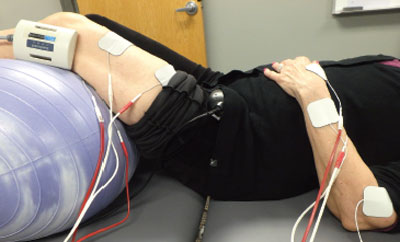Pain management in post total knee replacement
Osteoarthritis, OA affects approximately one in 10 individuals and is equally prevalent in men and women, although there is higher prevalence in postmenopausal and obese women. Knee OA’s high prevalence is directly associated with a rising number of surgical interventions designed to reduce pain and increase mobility for patients (i.e., total knee arthroplasty, TKA).
Managing pain in post total knee replacement plays a key role in successful outcomes.
By Keith Khoo PT, Physical Therapy Products February 26, 2015
 According to Moffet et al’s 2004 study, “More intensive rehabilitation should be promoted in the subacute recovery period after TKA, to optimize functional outcomes in the first year after surgery.”
According to Moffet et al’s 2004 study, “More intensive rehabilitation should be promoted in the subacute recovery period after TKA, to optimize functional outcomes in the first year after surgery.”
Aggressive focus on active and passive knee extension is one of the most important components of postoperative early rehabilitation. Persistent TKA flexion contractures are difficult to eliminate once they have been present for more than 3 months.
The most prominent outcome variable linked to OA and TKA is pain. The process for pain management that was applied in prehabilitation is the same process and rationale for post-surgical pain management.
Central sensitization plays an important role in post-surgical and post-traumatic pain. Post-operative pain is mostly nociceptive, which is pain perception following surgical insult.
Continue reading the bulletin and case study by Keith Khoo
| References |
Effectiveness of Intensive Rehabilitation on Functional Ability and Quality of Life After First Total Knee Arthroplasty: A Single-Blind Randomized Controlled Trial, Hélène Moffet PT PhD, Jean-Paul Collet PhD, Stanley H. Shapiro PhD, Gaston Paradis MD, François Marquis MD, Lucille Roy PT. Arch Phys Med Rehabil. 2004 Apr;85(4):546-56.






